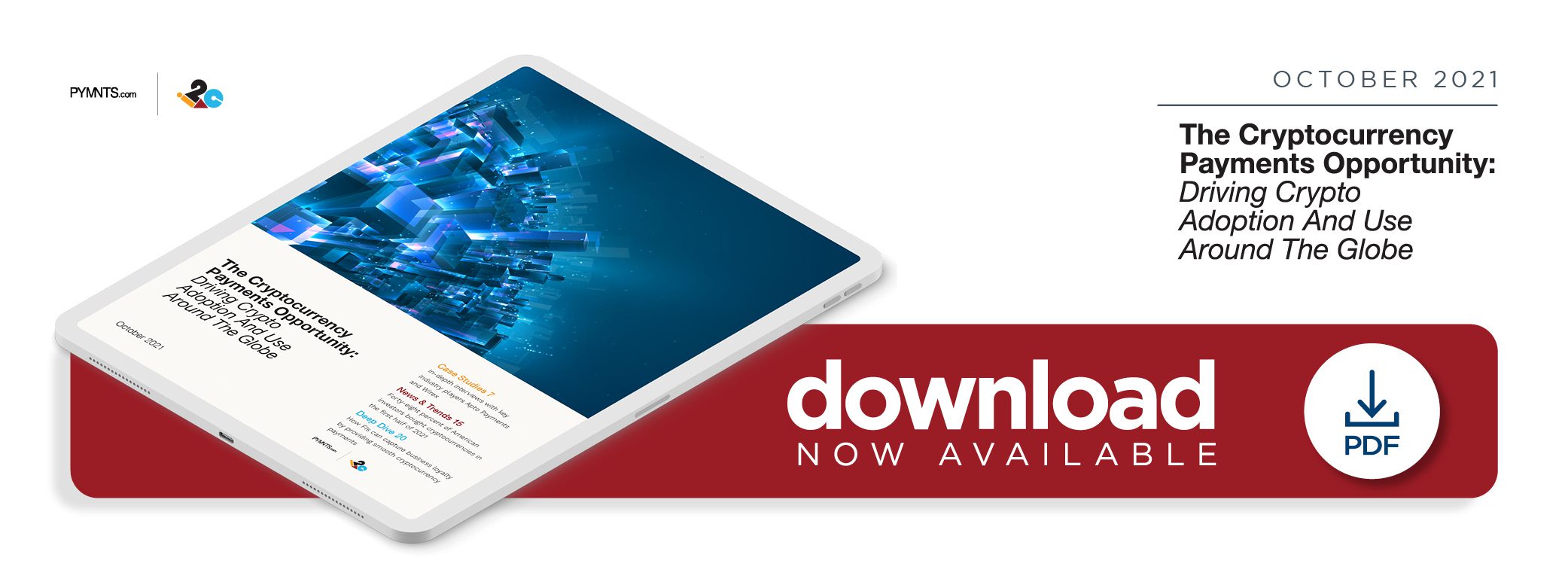Apto Payments on Why Gaining Merchants’ Trust Is Key to Taking Crypto Mainstream

The buzz around using cryptocurrencies for transactions has grown in recent months as businesses and consumers examine their potential after more than a year of experimenting with new, digitally optimized payment tools.
Several challenges still in play could keep cryptocurrencies in the realm of payment theory rather than practice for a few more years, however, including enabling seamless acceptance among merchants.
Until recently, cryptocurrency payments were much slower than the debit or credit card transactions with which most consumers and businesses were accustomed, said Matthew Goldman, vice president of Sales and Partnerships for crypto card issuer Apto Payments. He said cryptocurrency conversions took time to finalize because of their complexity, undermining many of the benefits offered to either party. Apto provides crypto-backed debit cards designed to cut down on these early-stage frictions, and its goal is to make virtual currency acceptance as easy and as seamless as it is for other digital payment types.
“If you look at the traditional methods, it was either find that one merchant who accepted it or go through this incredibly long process of going to a service like a Coinbase or an Uphold, converting your crypto into fiat, sending your fiat to your bank account [and] that might take two to four days,” he explained. “Then it’s in your bank account, and now you can start spending it. Well, what we’ve been able to do with our crypto-backed debit cards … is directly connect that wallet to the card. You’re still converting your cryptocurrency into fiat currency to spend it, but we can enable it essentially to happen in real time, effectively, or the same day.”
Cards such as these offer one solution that could drive cryptocurrencies’ adoption, but businesses and their customers must be convinced of their potential. Boosting consumers’ comfort with cryptocurrency requires overcoming several hurdles, Goldman explained. Solving for their volatility is a major factor, but it is equally crucial to establish virtual currencies as a legitimate payment option when individuals make purchases in their daily lives.
The Question of Trust
Cryptocurrencies are of significant interest to financial players working to adapt to the latest payments trends, but consumers simply looking to buy groceries or other everyday goods are more concerned about the practicality and functionality of their payment methods. Digital currencies largely will be irrelevant to consumers if they are not accepted for routine use, Goldman explained, and this means companies first must be convinced that cryptocurrencies are beneficial to their continued growth. Digital currency support among notable brands or larger companies generates lasting trust from consumers, many of whom are just starting to learn about the diversity of cryptocurrency use cases.
“If Tesla accepts bitcoin for a car, [then consumers determine that] it must be a real thing that has real value because a car has real value and Tesla’s a real brand,” Goldman said.
Merchants of all sizes also must be able to accept cryptocurrencies as swiftly and easily as more traditional forms of payment. This puts pressure on payments players to remove friction from the experience since merchants are unlikely to adopt cryptocurrency payments if they take minutes to process, he explained. Apto itself works with its payments processor, i2c, to help to ease many of the frictions that may be holding users back from adoption.
Apto’s crypto-backed debit cards, which virtual currency exchanges such as Uphold use, aim to solve this issue by moving the necessary currency conversions and pain points to the back end, he said.
“On the business side, we think that the debit card is the answer, [that it] is a big part of making crypto mainstream because it’s hard for merchants to accept new payment forms,” Goldman said. “It’s very hard, again, with the volatility. … How do you price things in Bitcoin? You just have to have the convergence in real time, [and] it’s complicated for your point of sale. No one wants a complicated point of sale; the goal of retail is to make the payment fade into the background because you’re focused on what you’re buying [as a consumer]. You’re focused on, ‘Is this a good latte? And am I getting good service?’ You’re not focused on, ‘How am I paying for this latte?’”
It is clear that creating crypto payment experiences that are as seamless as typical debit or credit transactions is the market’s next great challenge, but doing so also could grant merchants and consumers key benefits. Addressing these issues could open cryptocurrencies to other use cases, such as cross-border payments, but there still are some hurdles to clear before this can occur.
Prepping for Crypto’s Cross-Border Future
Bringing cryptocurrencies into cross-border payments could solve many challenges that multinational firms face as they attempt to reduce the costs and the time it takes to send funds. Much of the technology needed to support cross-border cryptocurrency payments exists, but regulatory uncertainties and volatility concerns can prompt chief financial officers to hold off on adopting digital currencies for international use. Goldman said he sees a “longer, slower path” to crypto’s expansion into the cross-border payments space, however.
“When you think about the costs and time of moving money around the world and using traditional systems like SWIFT, they’re not as secure or as great as they’ve been portrayed to be,” he said. “I think that crypto can really solve a lot of [those] things, but we’re just barely scratching the surface. … I think a lot of the early-stage challenges will go away. People will become more comfortable, there’ll be easier ways to on- and off-ramp [crypto, and] I think prices will also settle down over time as it becomes more consistent of a product and more accessible. We’ll probably also see a winnowing of altcoins where some will continue to fall by the wayside, and there will be a few selected winners.”
Keeping up with growing demand for cryptocurrencies is critical for businesses and payments players as they look to support domestic and cross-border transactions. Analyzing the deeper role virtual currencies could play in the global financial ecosystem over the next several years likely will prove key to helping companies stay competitive.
